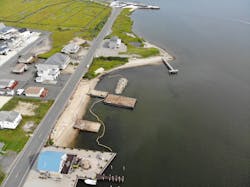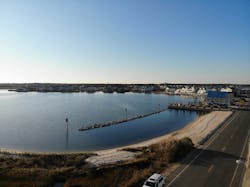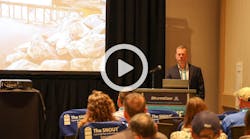In October 2012, Superstorm Sandy exploded across the American eastern seaboard, ranging as far south as the Caribbean and as far north as the US Northeastern states. High winds, flash floods, and storm surges killed more than 200 people and caused widespread property damage all along the superstorm’s path. Sandy was considered one of the most costly natural disasters in US history, with damages estimated at tens of billions of dollars.
The long-term effects of the superstorm, along with other natural disasters such as Tropical Storm Irene, have presented shore towns and low-lying areas with particularly unique long-term challenges. These communities have had to balance the goals of repairing damage from past storms and strengthening infrastructure for future disasters, all while wrestling with budget restrictions despite billions of dollars spent by both federal and state governments for repairs on infrastructure, businesses, and homes.
Various research, such as a recent study conducted by the Okinawa Institute of Science and Technology Graduate University, suggests that storms like Sandy will only become more frequent due to climate change. This poses an ongoing threat to towns and boroughs along the New Jersey shore. One very viable solution to this threat would be for municipalities to establish living shorelines. By recreating the natural functions of a shoreline ecosystem with the use of vegetative planting, low-profile rock, shell reefs, and other natural materials, this model can be used to combat erosion, restore and stabilize beaches, establish and strengthen natural habitats and protect existing infrastructure and homes. It can also be remarkably cost-effective for municipalities.
Little Egg Harbor Township and the Borough of Tuckerton
Dubbed “Little Treasure on the Bay,” Little Egg Harbor Township was founded in 1740 but remained predominantly rural until the 1950s, when bungalows were built on man-made lagoons and marketed as waterfront vacation properties. By the early 2000s, Little Egg Harbor was one of the fastest-growing townships in Ocean County, NJ. The Garden State Parkway bisects the Township, with the north portion within the New Jersey Pinelands Area and the south portion regulated by New Jersey’s Coastal Facilities Review Act. Little Egg Harbor’s population is more than 20,000 and it is 47.3 square miles in size. Bodies of water such as Great Bay and Barnegat Bay of the acreage and an additional 24% is wetlands.
The Borough of Tuckerton is entirely encompassed within the borders of Little Egg Harbor Township. It is believed that New Jersey’s first summer resort was on Tucker’s Island, which was part of the Borough. An advertisement from 1798 beckoned vacationers to the island with promises of sea bathing, fishing, and fowling. Unfortunately, the island no longer exists due to harsh coastal conditions that continue to affect both towns in the present day.
Like many other shore communities, Little Egg Harbor and Tuckerton suffered significantly from Superstorm Sandy. Finding a long-term solution for reducing potential risk and vulnerability was even more critical due to the high-density residential and commercial development of these seaport towns. Fortunately, both communities were able to combine their resources to implement the unique and innovative concept of a living shoreline as a solution to their deteriorating shorelines. This implementation of this project would result in a restored, resilient coastal community.
The project requirements were to eliminate shoreline erosion; restore and stabilize the beaches, marsh, and wildlife habitats along the waterfront on Iowa Court and South Green Street; protect adjacent private properties against wave action; and restore and protect the existing roadway infrastructure.
A detailed assessment was performed to identify shoreline changes and the potential for erosion. T&M Associates, a national consulting, environmental, engineering, technical services, and construction management firm, performed a Resiliency Measures Feasibility Study and Preliminary Survey to help identify the project areas, environmental constraints, permits, plantings, and estimates.
The assessment determined that using a traditional bulkhead, a popular and relatively inexpensive approach, would not adequately address wave action and could increase the risk of scouring, or shift risk to adjacent property owners. The alternative, a living shoreline, would be a more economical and environmentally considerate solution to the shoreline erosion problem. The living shoreline would effectively restore and replenish local marsh and wetlands, stabilize the beaches to reduce sea-level rise, reduce flooding and erosion while protecting the communities and vulnerable areas, and strengthen the natural ecosystems to benefit fish and wildlife.
Nevertheless, it was not simply a matter of creating a living shoreline. Typically, such a shoreline is difficult to incorporate into a residential setting and to maintain at this greater elevation over time, while also allowing water to move into the area at controlled levels for natural habitat support. The close proximity of residential dwellings limits the amount of available staging area and requires a greater focus on access, noise, and other disruptions for local residents. Additionally, the restored marsh platform would need to tie into the existing residential roadway and not cause runoff issues within the roadway. To accommodate these limitations, T&M developed innovative shore stabilization techniques.
The unique design features on Iowa Court included the installation of a marsh sill at the 1977 Tidelands Claim Line and the mean higher high-water line, internal sheeting to allow inundation twice a day, spat-on-shells for future oyster habitat, and restoration and planting of nearly a new acre of marsh. South Green Street’s unique features included the installation of a stone breakwater and spat-on-shells for future oyster habitat and beach replenishment. The project also entailed reclaiming an additional acre of salt marsh that had been lost to erosion and building a rock and bulkhead shelf to mitigate wave action.
The installation of a living shoreline is a groundbreaking technique used to recreate the natural functions of a shoreline ecosystem with the use of vegetative planting, low-profile rock, shell reefs, and other natural materials. While the innovations in this project reflect an exciting new approach, it should be emphasized that there is no one-size-fits-all approach to installing a living shoreline. Many different factors, from whether the shoreline is sheltered or protected to the different flora or fauna involved, will determine how a particular living shoreline is created. Any engineer seeking to design and install a living shoreline needs to keep an open mind.
A Team Effort
The installation of the living shoreline addressed the complexities and challenges faced during project implementation in allowing the residents and community to continue to maintain their quality of life while restoring 6 acres of marsh and wetlands and almost three-quarters of an acre of beach. The marsh restoration benefitted both communities by strengthening natural buffers against storm surges and erosion. This has helped protect critical infrastructure in the areas of Osborn Island (Iowa Court) and Tuckerton Beach (South Green Street).
This project resulted in zero financial impact on residents because of the grants received, and project completion occurred on time and under budget in September 2019. The township received a grant from the New Jersey Department of Environmental Protection, as well as a grant from the National Wish and Wildlife Foundation for the project. The unique design elements and innovative features of the Iowa Court and South Green Street Living Shoreline Project earned it the Best Green Project award for ENR New York’s 2020 Best Projects.
T&M Associates worked with a number of other consultants and professionals to bring the project to fruition. NJ Future and BRS Inc. assisted both municipalities with obtaining the original grant award from the National Fish and Wildlife Foundation. BRS Inc. continued throughout the project as the grant administrator. At the outset of project design, T&M teamed with Arthur Chew Consulting for area research, Princeton Hydro for sediment sampling/testing, and Hydrographic Surveys for surveying these waterfront areas. The Barnegat Bay Partnership will provide post-construction monitoring for the project as required by the New Jersey Department of Environmental Protection.
The permit process for this project was extensive and rigorous due to the many rules and regulations that the project had to comply with. It was necessary to prepare two NJDEP Permits—Coastal Wetland Permit 24 and Tidelands Management Rights Agreement—for the improvements to both sites. The project also required an Army Corps of Engineers Nationwide Permit 13 for both sites.
There were many interoffice and onsite meetings to work through some of the issues that came up during the review process. Private contractors and subcontractors worked closely with government officials and experts to overcome these obstacles. But if there is a lesson to be learned, it’s that more data gathering can be done at the outset of these projects and that government and oversight agencies should be brought into the process early.
Storm and flood damage are still very pressing threats to hundreds of coastal towns and boroughs throughout New Jersey and across America. Thankfully, we can find hope in innovation and creativity and in cooperation between the public and private sectors. With new approaches to developing living shorelines, we can breathe life back into devastated beachfront communities and the natural ecosystems that support them.
Jason Worth is vice president and operations manager of T&M Associates. In addition to being responsible for the operation of T&M’s Toms River, NJ, office, Worth provides leadership and technical direction to numerous professionals and support staff offering comprehensive municipal engineering services to a variety of communities. He has more than 15 years of experience in Public Works projects providing municipal engineering and planning services to numerous municipalities throughout New Jersey. Worth was a recipient of South Jersey Biz’s 20 Under 40 in 2019, which honors accomplished professionals under the age of 40 on the rise in the South Jersey business community.
About the Author
Jason Worth
Jason Worth is vice president and operations manager of T&M Associates. In addition to being responsible for the operation of T&M’s Toms River, NJ, office, Worth provides leadership and technical direction to numerous professionals and support staff offering comprehensive municipal engineering services to a variety of communities. He has more than 15 years of experience in Public Works projects providing municipal engineering and planning services to numerous municipalities throughout New Jersey. Worth was a recipient of South Jersey Biz’s 20 Under 40 in 2019, which honors accomplished professionals under the age of 40 on the rise in the South Jersey business community.





